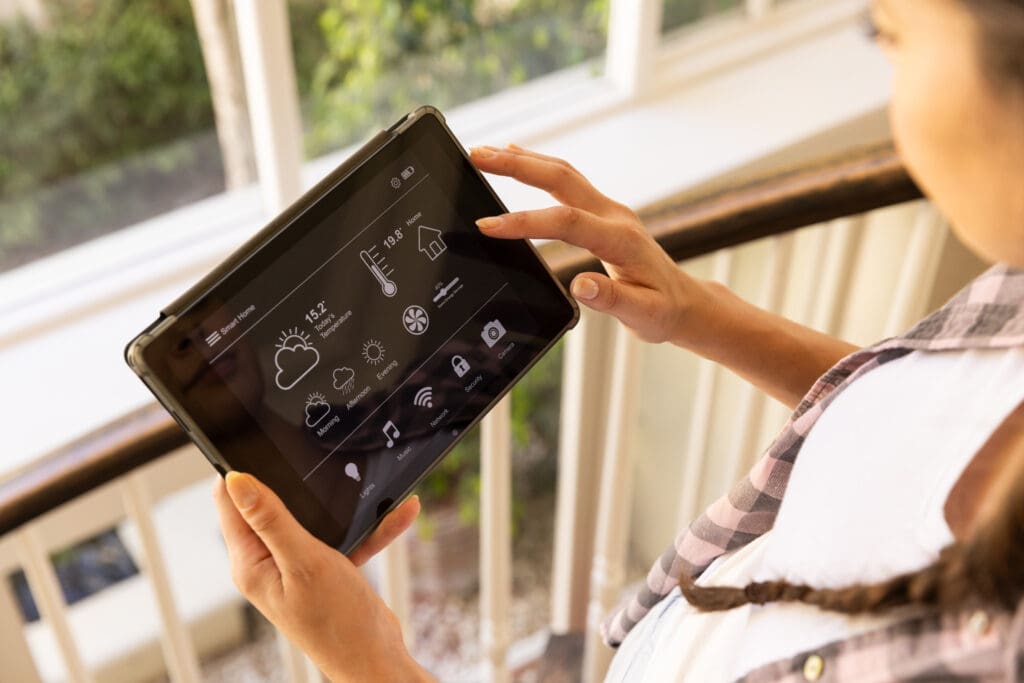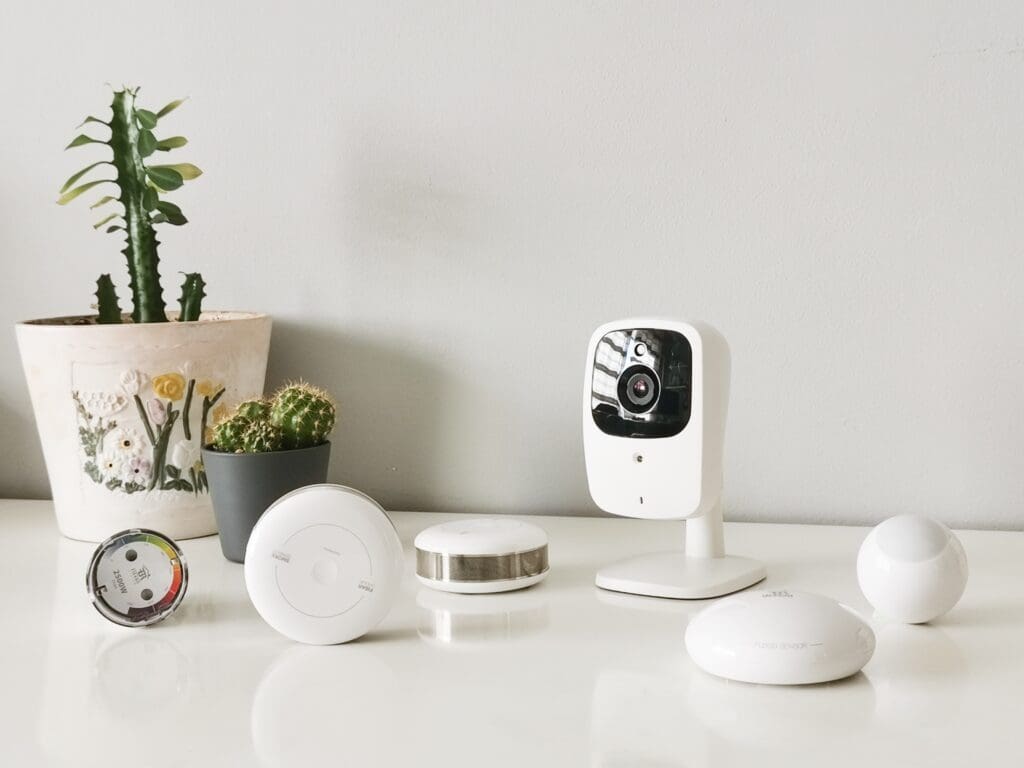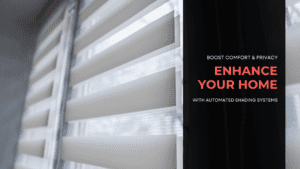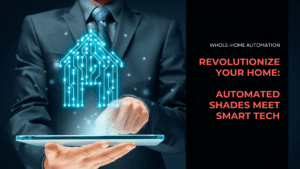Key Highlights
- Smart home technology offers convenience, efficiency, and peace of mind by automating everyday tasks.
- This comprehensive guide covers everything from the basics of home automation to advanced features and future trends.
- Explore essential smart home devices like thermostats, lighting, and security systems.
- Learn about voice control integration with popular platforms like Google Assistant and Amazon Alexa.
- Discover how to plan your smart home upgrade, overcome common challenges, and embrace the future of living.
Introduction
Smart home technology has revolutionized modern living, seamlessly integrating with our daily routines. A smart home automation system allows you to manage and control various aspects of your home – from lighting and temperature to security and entertainment – all at your fingertips.
This guide explores smart home upgrades, empowering you to transform your living space into a haven of convenience and efficiency, simplifying everyday tasks and enhancing your overall lifestyle.
Understanding the Basics of Home Automation

Home automation, at its core, revolves around the idea of interconnectedness. Imagine a network of smart devices throughout your home, all communicating with each other and controlled from a central hub. This hub, often a dedicated device or a smartphone app, acts as the “brain” of your smart home ecosystem.
Through this central hub, you can remotely manage various aspects of your home, including lighting, temperature, appliances, and security systems. You can set schedules, create automation routines, and receive real-time notifications, giving you unparalleled control and insight into your living space.
The Role of IoT in Home Automation
The Internet of Things (IoT) serves as the backbone of any modern smart home system. IoT devices, embedded with sensors, software, and connectivity, can communicate and exchange data with each other and with you.
Imagine your smart thermostat adjusting the temperature based on your preferences or your smart lights automatically turning on as you enter a room. This seamless interaction between devices enhances comfort, efficiency, and personalization within your living space.
The beauty of IoT lies in its ability to learn your habits and anticipate your needs, ultimately simplifying your life and making your home truly “smart.”
Key Components of a Smart Home System
A typical smart home comprises several key components working together to create a cohesive and intelligent living environment. Smart lights, for instance, offer energy-saving features and allow you to customize the ambiance by adjusting brightness and color.
A smart thermostat takes climate control to the next level by learning your preferred temperature settings, adjusting automatically, and even optimizing energy consumption based on your schedule.
Voice assistants, such as Google Assistant and Amazon Alexa, have become indispensable. These intelligent companions respond to your voice commands, allowing you to control various smart home devices, play music, set reminders, and much more hands-free.
Planning Your Smart Home Upgrade
Embarking on a smart home upgrade requires careful planning to ensure that all the chosen automation solutions seamlessly integrate into a comprehensive smart home ecosystem. Think about your lifestyle, needs, and budget, and prioritize the areas you wish to automate.
Selecting a versatile smart home platform is crucial, as it will serve as the central hub for controlling and managing all your devices. Research different platforms, their compatibility with various devices, and their ease of use to find the one that best suits your requirements.
Setting Goals for Home Automation
Before diving into the world of smart devices, it’s helpful to outline your goals for home automation. Are you aiming for enhanced energy efficiency, improved home security, increased convenience, or perhaps a combination of these?
If energy efficiency is a top priority, prioritize smart thermostats, intelligent lighting, and smart plugs that can monitor and optimize energy consumption.
For enhanced peace of mind, focus on security features such as smart locks, security cameras, and sensors that can detect motion, smoke, or water leaks. Understanding your priorities will guide your choices and help you create a smart home perfectly tailored to your needs.
Assessing Your Current Home Setup
Once you have a clear idea of your smart home goals, take stock of your current home setup. Identify the areas you want to automate and assess the compatibility of your existing systems with potential smart home upgrades. For example, determine the type of light bulbs and switches you have, the age of your HVAC system, and if you have existing security measures in place.
Consider the age and layout of your home. Newer homes may be pre-wired for smart features. Older homes may benefit from professional installation to ensure seamless integration.
A reliable and robust internet connection is the backbone of any smart home. Evaluate your current internet plan’s speed and reliability to handle the demands of multiple connected devices. Upgrading your internet service might be necessary for smooth operation if it’s not up to par.
Essential Smart Home Devices for Beginners

Starting with a few essential smart gadgets is an excellent option if you’re new to the concept of home automation. These devices offer a taste of the convenience and efficiency of a connected home without overwhelming you with features.
Smart lights, thermostats, and voice assistants are often considered the gateway to the smart home world. These user-friendly devices can considerably impact your daily life. They are relatively easy to install and manage and deliver immediate benefits.
Smart Thermostats: Enhancing Comfort and Efficiency
A smart thermostat, such as a Google Nest or Ecobee, can significantly impact both comfort and energy savings. These intelligent devices learn your preferred temperature settings and adjust throughout the day, ensuring optimal comfort while minimizing energy waste.
Many smart thermostats integrate with sensors that monitor indoor air quality. They can detect elevated levels of humidity, volatile organic compounds (VOCs), or other pollutants and notify you accordingly.
By automating temperature control and optimizing energy consumption, smart thermostats empower you to reduce energy costs without compromising comfort. Some models even provide monthly energy reports, giving you insights into your usage patterns.
Intelligent Lighting Solutions for Every Room
Gone are the days of fumbling for light switches. Smart lighting offers convenience, security, and energy efficiency. Replace traditional light bulbs with smart bulbs or install smart switches to control lighting with your smartphone or voice commands.
Set schedules for your lights to automatically turn on and off, creating the illusion of occupancy when you’re away, which enhances home security. You can control individual lights or group them together to create customized lighting scenes for different activities like reading, watching movies, or entertaining guests.
Smart lighting’s ability to automate, customize, and remotely control your lighting enhances both the ambiance and security of your living space. You’ll also appreciate the energy savings, as smart lights can be programmed to turn off automatically when not in use, saving you money on your electricity bill.
For more essential devices, review the must-have smart home devices for 2025 and identify the latest hubs, sensors, and controllers that will keep your upgrade as advanced as it is seamless.
Advanced Automation for the Tech-Savvy Homeowner
For those seeking to take their smart home to the next level, advanced automation solutions offer seamless control and personalization. Voice commands play a key role in advanced automation, allowing you to effortlessly control various aspects of your smart home ecosystem.
Imagine walking in the door after a long day and uttering, “Alexa, turn on the lights, set the thermostat to 72 degrees, and play some relaxing music.” These automation solutions simplify your life, making your interactions with technology more intuitive and enjoyable.
Home Security Systems: From Smart Locks to Surveillance Cameras
A robust home security system is paramount in today’s interconnected world. Smart home technology empowers you with features that enhance the security and safety of your property. Start with smart locks for your front door and other entry points.
Control access remotely, grant temporary access to guests, and receive notifications if any unusual activity occurs. Surveillance cameras provide an extra layer of protection by capturing live feeds of your property, allowing you to monitor activities and deter potential intruders.
Choose from indoor or outdoor cameras, those with motion detection capabilities, and some equipped with night vision for 24/7 surveillance. Many cameras offer cloud storage options, so you can access recorded footage anytime, even if your camera is tampered with.
Multi-Room Audio Systems for an Immersive Experience
Elevate your entertainment game with a multi-room audio system. Control music throughout your home from a central hub—your smartphone or tablet—and experience high-quality audio that adapts to your needs. These systems typically utilize Wi-Fi or Bluetooth to stream music wirelessly to smart speakers or connected audio devices placed strategically throughout your home.
Imagine starting your day with your favorite tunes playing softly in the bathroom, transitioning to an upbeat playlist in the kitchen as you make breakfast, and finally enjoying a captivating podcast in your living room.
Multi-room audio systems transform your living space into an immersive sonic haven, allowing you to customize the audio experience in each room to match your mood or activity.
Integrating Voice Assistants for Hands-Free Control

Voice control has revolutionized the way we interact with our smart homes, offering a seamless and intuitive way to manage various devices and tasks. Integrating a voice assistant, such as Google Assistant or Amazon Alexa, into your smart home ecosystem unlocks a new level of convenience.
Simply by using your voice, you can control compatible smart home devices, play music, set reminders, make calls, get weather updates, and much more—all without lifting a finger.
Choosing Between Google Assistant, Amazon Alexa, and Siri
When it comes to choosing the right voice assistant for your smart home, three major contenders dominate the market: Google Assistant (Google Home), Amazon Alexa, and Apple’s Siri (Apple HomeKit). Each platform boasts a vast ecosystem of compatible devices, third-party integrations, and unique features, making it essential to consider your priorities and preferences.
Google Assistant excels in its ability to understand and respond to natural language queries, providing comprehensive and accurate information. Amazon Alexa boasts a massive library of skills, essentially voice-activated apps, offering a wide range of functionalities, from controlling smart home devices to ordering takeout.
Apple HomeKit focuses on privacy and security, providing end-to-end encryption and requiring strict certification for compatible devices. Ultimately, the best voice assistant for you depends on your existing ecosystem, preferred features, and level of comfort with data privacy.
Creating Routines and Commands for Everyday Convenience
One of the most compelling aspects of a smart home is the ability to automate everyday tasks and create routines that simplify your life. Most smart home platforms offer intuitive interfaces for setting up these automations, allowing you to link various devices and actions together.
For example, you could create a “Good Morning” routine that gradually raises your smart lights, adjusts the thermostat to your preferred temperature, and starts brewing your coffee, all triggered by a simple voice command or a specific time. Similarly, a “Goodnight” routine might turn off the lights, lock the doors, arm the security system, and lower the thermostat.
The possibilities for customization are virtually endless, allowing you to tailor your smart home to your specific needs. As you integrate more devices and explore different combinations, you’ll find that your smart home becomes an indispensable part of your daily routine, making life more convenient and enjoyable.
The Future is Now: Next-Gen Smart Home Innovations

The world of smart home technology is constantly evolving, with next-gen innovations poised to revolutionize how we interact with our living spaces further. Artificial intelligence (AI) and augmented reality (AR) are at the forefront of this exciting frontier, paving the way for even more intuitive, responsive, and personalized smart home experiences.
Imagine a home where your appliances anticipate your needs, your mirrors display personalized information, and AR overlays enhance your surroundings with contextual data. These innovations signal a future where technology seamlessly blends into the fabric of our homes, enhancing comfort, convenience, and efficiency in remarkable ways.
AI-Driven Appliances That Learn from Your Habits
AI-driven appliances are no longer a futuristic concept but rapidly becoming a reality. These intelligent devices utilize machine learning algorithms to analyze your usage patterns, learn your preferences, and anticipate your needs, ultimately making your life easier and more efficient.
For instance, imagine a smart fridge that can create grocery lists based on its contents, suggest recipes based on available ingredients, or even order groceries automatically when supplies run low.
Likewise, a next-generation coffee maker might learn your preferred brewing time, strength, and even anticipate when you wake up to have a fresh cup ready as you stumble into the kitchen.
The Integration of Augmented Reality in Home Automation
Augmented reality holds immense potential for enhancing various aspects of home automation, adding interactive and informative layers to our surroundings. In the realm of home entertainment, AR could transform your living room into an immersive gaming environment or project a virtual big screen for movie night, all without bulky equipment.
Smart home control panels could utilize AR to overlay real-time data about your home’s energy consumption, security status, or appliance performance onto a physical surface, providing an intuitive and engaging way to monitor and manage your smart home.
With AR’s ability to blend digital content with the real world, the possibilities for enhancing home automation solutions are boundless. Imagine using hand gestures to control your smart lights, viewing virtual blueprints of your home for maintenance purposes, or even receiving step-by-step cooking instructions projected onto your kitchen counter.
Overcoming Common Challenges in Home Automation
While the benefits of a smart home are undeniable, several challenges can arise during setup, integration, and everyday use. Ensuring compatibility among different devices from various manufacturers is crucial for seamless operation.
Opt for devices certified by major smart home platforms like Amazon Alexa, Google Assistant, or Apple HomeKit to minimize compatibility issues. Robust network reliability is paramount for a responsive and dependable smart home experience, so a strong WiFi signal is essential to prevent connectivity problems. Consider investing in mesh WiFi routers strategically placed around your home to provide comprehensive coverage..
Ensuring Compatibility Among Different Devices
One of the most significant challenges in building a smart home is ensuring seamless compatibility among devices from different manufacturers. Not all devices speak the same language, leading to connectivity issues, limited functionality, or even complete incompatibility. To avoid these headaches, research and invest in devices that operate on the same smart home platform or protocol.
For example, if you’re an Apple user heavily invested in the Apple ecosystem, choosing devices compatible with Apple HomeKit would make sense. Similarly, if you’re an Amazon Alexa enthusiast, prioritize devices that work seamlessly with the Alexa ecosystem.
A central hub can act as a bridge between different ecosystems, allowing communication between devices that might not natively support each other. Many smart home hubs offer compatibility with multiple platforms, such as Zigbee, Z-Wave, and Wi-Fi, increasing the chances of connecting a broader range of devices.
Strengthening Your Home’s Network for Reliable Automation
A robust and reliable internet connection is the lifeblood of any smart home. As you add more devices to your home network, the demand for bandwidth increases. A weak or unstable internet connection can result in laggy performance, dropped connections, and unreliable automation, ultimately hindering your smart home experience.
Start by assessing your current internet plan’s speed and bandwidth capacity. If you’re experiencing frequent buffering, slow loading times, or dropped connections, consider upgrading to a faster internet plan with higher bandwidth.
Consider investing in a mesh WiFi system, which deploys multiple access points throughout your home, creating a seamless and robust WiFi network. Unlike traditional routers that rely on a single access point, mesh WiFi systems eliminate dead zones and ensure a strong signal reaches every corner of your home.
Transform Your Home Today!
Embracing a smart home lifestyle through seamless automation not only enhances convenience but also revolutionizes your living experience. With IoT technologies and advanced devices, you can create a connected ecosystem tailored to your needs. By setting goals, evaluating your existing setup, and selecting the right devices, you pave the way for a futuristic home environment.
Overcoming compatibility challenges and strengthening your network ensure a reliable smart home system. As technology evolves, integrating AI-driven appliances and augmented reality opens up endless possibilities for personalized automation experiences.
As you map out your upgrade path, Boston Automations’ custom smart home systems ensure every device—from lighting to security—is seamlessly integrated under a single, intuitive platform.
Contact us to help you upgrade your home today for a smarter tomorrow.
Frequently Asked Questions
What is the first step in upgrading to a smart home?
Begin by carefully planning and assessing your needs and priorities. Then, choose a versatile smart home platform or a central hub that aligns with your requirements and explore the possibility of professional installation for optimal setup.
How can I ensure my smart home devices are secure?
Enhance your home security system by using strong, unique passwords for all accounts and enabling two-factor authentication whenever possible. Secure your network, install security software, and regularly update device firmware for optimal protection.
What are the best smart home devices for beginners?
Excellent starter smart home devices include smart lights, a smart thermostat, a voice assistant, and a smart lock. Many companies also offer starter kits, often a cost-effective way to start your journey.




